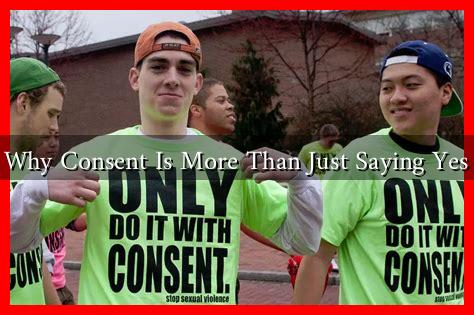-
Table of Contents
Why Consent Is More Than Just Saying Yes
Consent is a fundamental aspect of human interaction, particularly in intimate relationships. However, the common perception that consent is merely a verbal “yes” oversimplifies a complex issue. Understanding consent requires a deeper exploration of its nuances, implications, and the societal context in which it exists. This article delves into why consent is more than just saying yes, highlighting its multifaceted nature and the importance of clear communication.
The Definition of Consent
At its core, consent refers to the agreement between participants to engage in a specific activity. However, this definition can be misleading if not contextualized properly. Consent must be:
- Informed: All parties should have a clear understanding of what they are consenting to.
- Freely Given: Consent must be given without coercion, manipulation, or pressure.
- Reversible: Anyone can change their mind at any time, regardless of previous agreements.
- Enthusiastic: Consent should be expressed with eagerness and willingness, not reluctance.
The Importance of Context
Context plays a crucial role in understanding consent. For instance, a person may say “yes” to a date but may not be comfortable with physical intimacy. This highlights the need for ongoing communication and understanding of boundaries. A study published in the journal Journal of Interpersonal Violence found that many individuals misinterpret consent due to a lack of clarity in communication. This misinterpretation can lead to situations where one party feels violated, even if the other believed they had consent.
Case Studies: Misunderstandings of Consent
Several high-profile cases have brought the issue of consent into the public eye, illustrating the dire consequences of misunderstanding this concept. For example:
- The Stanford Rape Case: In 2016, Brock Turner was convicted of sexually assaulting an unconscious woman. The case highlighted the importance of understanding that consent cannot be given if a person is incapacitated.
- The #MeToo Movement: This movement has shed light on numerous instances where individuals felt their consent was violated due to power dynamics, coercion, or manipulation.
Statistics on Consent and Sexual Assault
Statistics reveal the alarming prevalence of sexual assault and the misconceptions surrounding consent:
- According to the Rape, Abuse & Incest National Network (RAINN), an American is sexually assaulted every 68 seconds.
- A survey by the American Association of University Women found that 1 in 5 women and 1 in 16 men are sexually assaulted while in college.
- Research indicates that 63% of sexual assaults are not reported to the police, often due to fear of not being believed or misunderstanding of consent.
Educating About Consent
Education is key to fostering a culture of consent. Schools, universities, and community organizations are increasingly implementing programs to teach individuals about the importance of consent. These programs often focus on:
- Clear communication skills
- Understanding boundaries
- Recognizing coercion and manipulation
- Encouraging bystander intervention
For more resources on consent education, organizations like RAINN and Planned Parenthood offer valuable information and support.
Conclusion: The Path Forward
In conclusion, consent is a complex and multifaceted issue that extends far beyond a simple “yes.” It requires informed, enthusiastic, and ongoing communication between all parties involved. By understanding the nuances of consent and promoting education around it, we can create a safer and more respectful society. The responsibility lies with each individual to ensure that consent is not only sought but also understood and respected. As we move forward, let us commit to fostering a culture where consent is prioritized, and every individual’s autonomy is honored.


